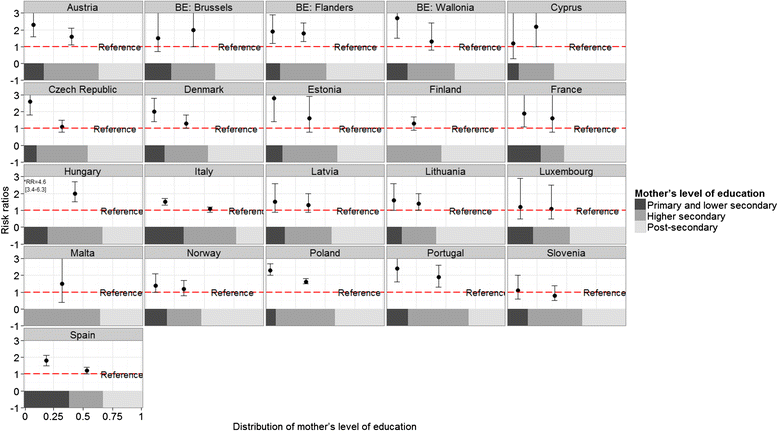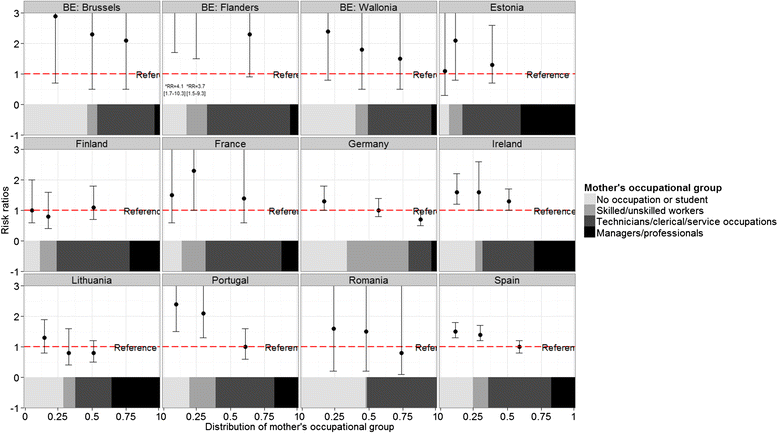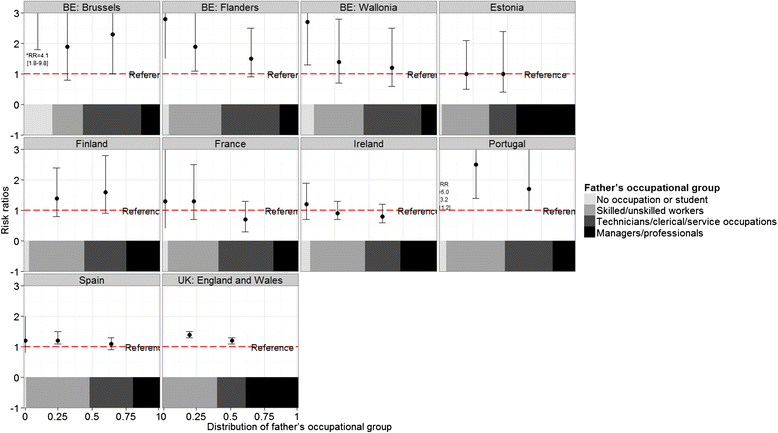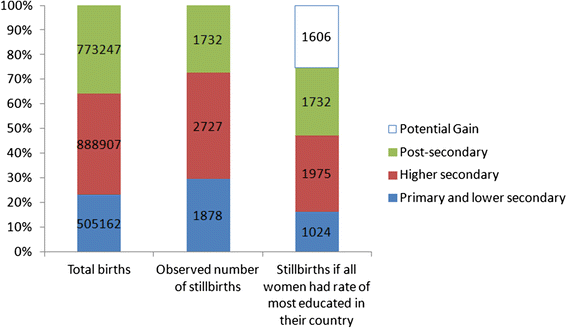Socioeconomic inequalities in stillbirth rates in Europe: measuring the gap using routine data from the Euro-Peristat Project
- PMID: 26809989
- PMCID: PMC4727282
- DOI: 10.1186/s12884-016-0804-4
Socioeconomic inequalities in stillbirth rates in Europe: measuring the gap using routine data from the Euro-Peristat Project
Abstract
Background: Previous studies have shown that socioeconomic position is inversely associated with stillbirth risk, but the impact on national rates in Europe is not known. We aimed to assess the magnitude of social inequalities in stillbirth rates in European countries using indicators generated from routine monitoring systems.
Methods: Aggregated data on the number of stillbirths and live births for the year 2010 were collected for three socioeconomic indicators (mothers' educational level, mothers' and fathers' occupational group) from 29 European countries participating in the Euro-Peristat project. Educational categories were coded using the International Standard Classification of Education (ISCED) and analysed as: primary/lower secondary, upper secondary and postsecondary. Parents' occupations were grouped using International Standard Classification of Occupations (ISCO-08) major groups and then coded into 4 categories: No occupation or student, Skilled/ unskilled workers, Technicians/clerical/service occupations and Managers/professionals. We calculated risk ratios (RR) for stillbirth by each occupational group as well as the percentage population attributable risks using the most advantaged category as the reference (post-secondary education and professional/managerial occupations).
Results: Data on stillbirth rates by mothers' education were available in 19 countries and by mothers' and fathers' occupations in 13 countries. In countries with these data, the median RR of stillbirth for women with primary and lower secondary education compared to women with postsecondary education was 1.9 (interquartile range (IQR): 1.5 to 2.4) and 1.4 (IQR: 1.2 to 1.6), respectively. For mothers' occupations, the median RR comparing outcomes among manual workers with managers and professionals was 1.6 (IQR: 1.0-2.1) whereas for fathers' occupations, the median RR was 1.4 (IQR: 1.2-1.8). When applied to the entire set of countries with data about mothers' education, 1606 out of 6337 stillbirths (25 %) would not have occurred if stillbirth rates for all women were the same as for women with post-secondary education in their country.
Conclusions: Data on stillbirths and socioeconomic status from routine systems showed widespread and consistent socioeconomic inequalities in stillbirth rates in Europe. Further research is needed to better understand differences between countries in the magnitude of the socioeconomic gradient.
Figures




References
MeSH terms
LinkOut - more resources
Full Text Sources
Other Literature Sources
Medical
Miscellaneous

